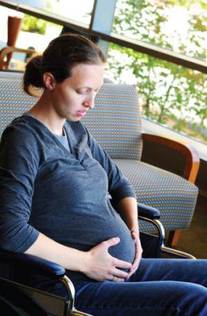 Five years after delivering their first child, symptoms related to stress urinary incontinence (SUI) and overactive bladder (OAB) are more common and of greater severity after vaginal than cesarean birth, a study found. These differences, however, lessen with increasing time since childbirth. The study, by Victoria L. Handa, MD, of Johns Hopkins University in Baltimore, and colleagues, included 1,481 parous women enrolled 5-10 years after their first delivery. The women completed up to 5 annual assessments. During follow-up, the incidence of highly bothersome SUI and OAB were 2.5 per 100 woman-years and 1.7 per 100 woman-years, respectively. The estimated prevalence of leakage related to activity, coughing, or sneezing among women in the study's reference group (5 years after delivery, 30 years old at first delivery, non-obese, and non-black) was 54% among those who had at least 1 vaginal birth versus 20% among women who only had cesarean delivery, Dr. Handa's group reported online ahead of print in Neurourology and Urodynamics. The vaginal birth group also had a higher estimated prevalence of leakage of “drops” (37% vs. 17%), frequent urination (27% vs. 17%), need to rush to the bathroom for urination (17% vs. 7%), and leakage related to a feeling of urgency (17% vs. 7%). The relative odds of leakage related to activity, coughing, or sneezing increased by 6% per year since first birth in the cesarean section group, but did not change in the vaginal birth group. In both groups, the relative odds of urinary urgency (the need to rush to the bathroom for urination) increased significantly with increasing time from first birth (7% per year in the cesarean group and 6% in the vaginal birth group). “This study suggests a substantial impact of vaginal delivery on the presence and on the severity of urinary symptoms, especially 5 years from delivery,” the authors concluded. “However, over the subsequent 5 years, the odds for urinary symptoms increase annual among those who delivered by cesarean, especially for symptoms related to SUI.” The researchers also found that obesity was strongly associated with symptoms related to SUI and OAB. In the vaginal birth group, obese women had a significant 47% increased likelihood of leakage related to activity, coughing, or sneezing and a significant 43% increased likelihood of nocturia compared with non-obese women. In the cesarean group, obese women, compared with non-obese women, had a significant 2.5 times increased likelihood of leaking related to activity, coughing, or sneezing. They also had a significant 2.9 and 2.6 times increased odds of needing to rush to the bathroom for urination and leaking related to a feeling of urgency, respectively, as well as a significant 67% increased likelihood of frequent urination an a significant 62% increased likelihood of nocturia. The authors concluded that obesity is an important risk factor for bladder symptoms “and therefore obesity control should be a primary target for reduction of incontinence and incontinence severity among parous women.”
0 Comments
Leave a Reply. |
Σχετικά
Με το ιστολόγιο αυτό επιχειρείται η κατά το δυνατόν άμεση ενημέρωση σε θέματα που αφορούν ουρολογικές εξελίξεις και δίνεται η δυνατότητα σχολιασμού των αναρτήσεων. Κατηγορίες
All
|
|
Ιατρείο Λαγκαδά: Δ. Μήλιου 24 (έναντι 1ου δημοτικού), Λαγκαδάς
Τ: 2394 020 780, Κ: 693 63 23 794 |
Όροι Χρήσης | Επικοινωνία | Copyright © 2013
 RSS Feed
RSS Feed